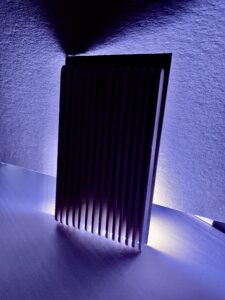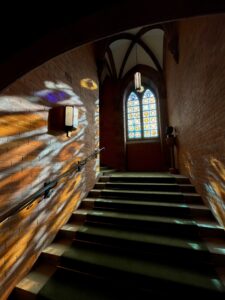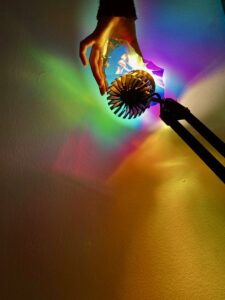Neurogenesis
- When the human animal is placed in an environment that’s called enrichment with adequate light and temperature variation and other elements that support life we can actually generate new brain cells to a very specific region in the brain.
- The hypo campus – when we involve our bodies in an environment that stimulates that aspect of the brain, new bean cells develop.
Epigenetic expression
- by having a built environment with adequate light and temperature variations can change the expression and silencing of over 51% of our genes.
- The non visual ocular reception – our eyes are designed to use light
- Multiple discoveries demonstrating a non-visual receptor system prioritising the eye as a primary organ for survival
- iPRG cells – intrinsic photoreceptor cells are just one part of the puzzle. It is a survival anticipatory system, it is not just a rhythm (referring to circadian rhythms)
Circadian system
- operates on about 24.2 hours
- Have to correlate it twice a day so that it can align itself where it trains itself with the natural photo periods both light and dark
- Examples: heart beat, blood pressure, sleep, wound healing, immune system, metabolic function, mood, weight
- All influenced by the light and temperature of the built environment
- The circadian rhythm sends out signals to the hormonal system such as melatonin and others that are key and critical for tumour suppressant and DNA protection.
- This then sets off neurotransmitters which support human sleep and metabolic genes and hormonal cancers.
- This then sets up a dichotomous relationship between sleep and wake.
- Sleep starts 2 hours before we get up in the morning so that the active sleep can happen at night after we have accumulated enough adenosine to be able to initiate the act of sleep
The body uses the information contained within the light to initiate a response in the eye
- ambient light enters the eye as wavelengths of energy, prioritised by 3 receptor types and then dispatched to the brain for further processing
- Light protocols are the criteria of lighting conditions used by the brain to govern the expression of specific genes and regulate most neuroendocrine response
- Spectral distribution, timing, intensity, duration, location, source
- Sends it back to the brain; vision occurs in the brain, non visional occurs in the eye which keeps the circadian rhythm coordinated with our environment
- LEDs 1/16th as bright as the sun
Designing light
- consider your client, be aware of the ageing eye
- Who are you designing for
- Vision is affected by yellowing of the lens, reduced colour vision and reduced light absorption
- Make sure not to light pollute
- Consider what you are lighting, does it need light?
- Aspire to human-centric lighting design
- Design with daylight orientation in mind and know your sun path
- Think about the colour of the light
- It is blue lights role in governing circadian rhythms that poses greater concern for public health. It isn’t natural to extend your day with artificial lighting. People are also doing activities in the evening they wouldn’t have done 20 or 30 years ago and that stimulation may be having far more effect than the light itself.




